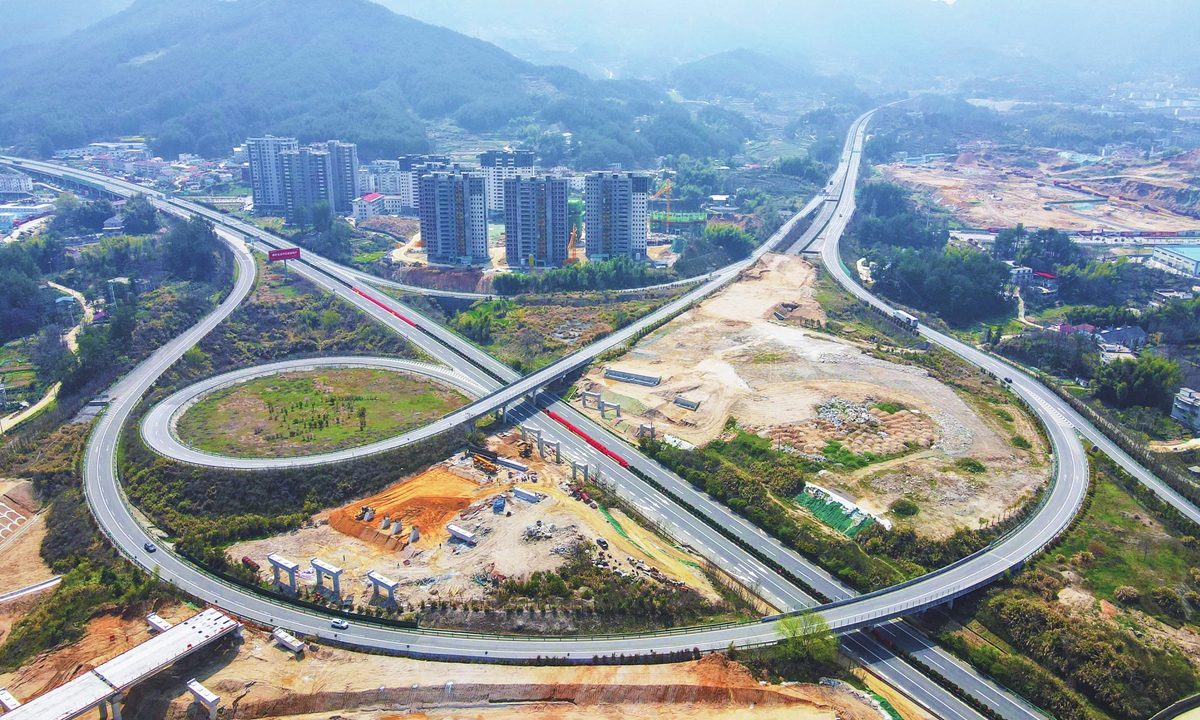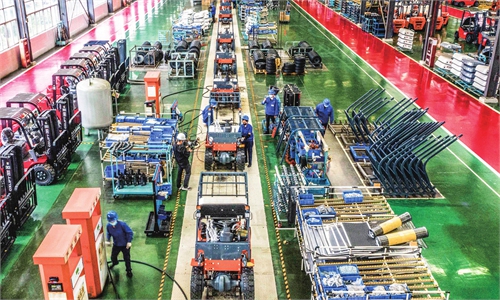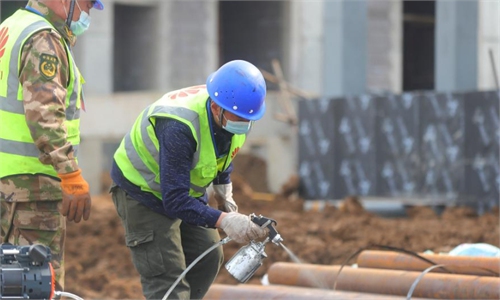Guidelines aim to revitalize existing infrastructure
Move could create financing sources for investment in new projects

A highway to Wuhan, Central China's Hubei Province is under construction in Anqing, East China's Anhui Province on March 28, 2022. With major infrastructure projects kicking off across multiple provinces in China, fixed-asset investment is on a fast track, and it's expected to drive economic growth. Photo: cnsphoto
The State Council, China's cabinet, on Wednesday unveiled guidelines to revitalize existing infrastructure assets while expand effective investment, in a fresh push to revive the world's second-largest economy amid multiple domestic and global complexities.After years of investment and construction, the country has accumulated substantial assets in infrastructure. An effective revitalization of existing assets to result in a virtuous cycle of those assets and newly added investment is crucial for improving infrastructure management, broadening conduits for social investment, expanding effective investment and reducing corporate debt levels, according to a statement detailing the 24-item measures on the website of the central government.
Among the key areas to be revitalized are large infrastructure projects with sound returns or high growth potential such as transportation, water conservancy, clean energy and affordable housing.
Facilities that have been vacant but can be developed further are also on the list, including outdated factories, cultural and sports facilities and idle land.
Regions where local governments have high debt levels and are under pressure to balance local budget and spending will be prioritized to ramp up the revitalization push, resolve local government debt risks, enhance fiscal sustainability and support new projects.
Economic powerhouses including the Beijing-Tianjin-Hebei region, Yangtze River Economic Belt, Guangdong-Hong Kong-Macao Greater Bay Area, and Hainan Free Trade Port are supposedly to serve as exemplary asset revitalization regions.
Nationwide, no less than 30 key projects that are attractive and sufficiently representative and a selection of institutions that vigorously underpin the policy push will be selected as role models, read the guidelines, advising different parts of China to customize the implementation of the measures in line with local realities and avoid rushing into action en masse.
China has accumulated a batch of idle assets in recent years. After getting permission from the central government, some of those assets can be sold to private capital or used to carry out mixed-ownership reforms, said Hu Qimu, chief research fellow at the Beijing-based Sinosteel Economic Research Institute.
Those projects can be operational with the help of private investors, and the government can withdraw some capital, which can replenish fiscal income and be used to invest in other projects, Hu told the Global Times on Wednesday.
Yan Yuejin, research director at Shanghai-based E-house China R&D Institute, said that revitalizing industrial parks, old factories and government-subsidized rental housing should be the focus of the work.
There are many ways to recapitalize the projects, such as selling land at a cheaper price or with favorable conditions. It can also be done by setting up real estate investment trust funds that allow private companies to receive part of the equity earnings of certain projects, Hu said.
The guidelines eyed improved efficiency in recommending and reviewing infrastructure funds to encourage the issuance of more qualified infrastructure REITs.
"The experiments on subsidized rental housing REITs are proceeding, and might speed up in the future. Such reforms will not only help expand work on promoting subsidized rental housing fundraising, but will alleviate the government's pressure in direct investment," Yan said.
In addition to the REIT push, the guidelines envisioned the adoption of public-private partnerships to reboot existing projects with stable operating yields over the long term.
Tapping idle assets does not mean the suspension of new infrastructure projects. Instead, it is a means to raise more money to be invested in more new infrastructure projects, according to Hu.
The main reason for moves to tap into the idle assets, which the government didn't encourage much in the past, is the nation's dual pressure on fiscal revenues and the need to stabilize economic growth.
"Among the major pillars of the economy, the momentum for consumption growth is weak. As overseas markets are also moving to resume production, exports as a growth engine seem to be fading.
"The only effective way to stimulate the economy is through enlarged investment," Hu said.
In the first four months of the year, growth in urban fixed-asset investment slowed to 6.8 percent from 9.3 percent for the first quarter, data showed. The urban fixed-asset investment reading for April alone edged down 0.82 percent from the month before.
"At a time when the government has limited fiscal income and rising expenditures, because of relief policies like tax cuts and reliefs for small companies, the government can only think about raising funds through existing state-owned assets if it wants to find incremental capital for infrastructure projects," Hu said.
According to him, it's hard to quantity the economic benefits of such moves, but it should be able to release a sizable amount of money because China has a large amount of fixed assets.



